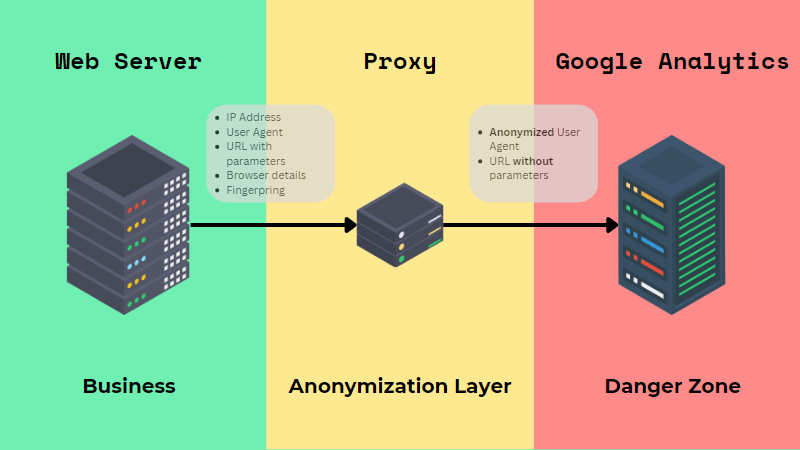Navigating the Complexities of Information Collection Limitations in Google Analytics: What You Required to Know
Beneath its seemingly uncomplicated user interface lie intricacies that can impact the accuracy and integrity of the data it offers. Recognizing the intricacies of data collection restrictions in Google Analytics is vital for making informed decisions based on the understandings acquired from the platform.
Information Inconsistencies in Google Analytics
Sometimes, data inconsistencies might occur in Google Analytics, requiring a comprehensive understanding of the platform's ins and outs to properly resolve and remedy these disparities. These disparities can come from numerous resources, such as execution concerns, data tasting, filters, and even robot traffic. One typical reason for information inconsistencies is inconsistencies between data accumulated through JavaScript tracking code and information imported from various other sources like Google Ads or Search Console.
To attend to these discrepancies, it is vital to very first conduct a comprehensive audit of your monitoring arrangement. Confirm that the monitoring code is properly implemented on all pages, check for any filters that may be altering the data, and guarantee that there are no redirects or other technological issues disrupting data collection. Furthermore, familiarize on your own with typical mistakes, such as cross-domain tracking errors or misconfigured goals.
Monitoring Difficulties and Solutions
Given the complexities of information inconsistencies that can emerge in Google Analytics, attending to tracking challenges and executing effective options becomes extremely important for making sure trusted and precise information analysis. To overcome this, applying user ID monitoring can help link interactions across various gadgets under one customer identifier, offering an extra alternative sight of individual behavior.
One more tracking difficulty originates from advertisement blockers and personal privacy policies, which can impede the collection of accurate data (What Data Does Google Analytics Prohibit Collecting?). Solutions to this include carrying out server-side monitoring, which bypasses client-side constraints, and respecting individual personal privacy choices by offering clear opt-in systems for information collection

Understanding Sampling in Reports
Experiencing in reports supplies a technique for evaluating big datasets efficiently while maintaining analytical relevance. In Google Analytics, tasting occurs when the quantity of information inquired surpasses a particular limit, leading to the system analyzing just a portion of the data to give understandings. While sampling can quicken record generation and decrease processing demands, it is critical to understand its effects on the accuracy and dependability of the results.
When handling tasted data, it's necessary to consider the potential margin of error that might develop as a result of evaluating only a part of the full dataset. The precision of the understandings originated from tasted records might differ, and individuals must interpret the findings with care, specifically when making data-driven decisions based on these reports.
To browse sampling in Google Analytics properly, customers can check out options such as changing the sampling degree, making use of customized record configurations, or leveraging Google Analytics 360 for higher information restrictions and more precise reporting capacities. By recognizing the subtleties of tasting in records, customers can make educated choices and attract reputable verdicts from their data analysis initiatives.
Influence of Cookie Removal on Data

Moreover, cookie removal can alter market and rate of interest data, as Google Analytics relies upon cookies to classify individuals based upon their browsing patterns. Without this details, online marketers may have a hard time to develop targeted campaigns that resonate with their target market. To alleviate the impact of cookie removal, services can motivate individuals to opt-in for data monitoring, make use of other tracking approaches like individual IDs, and on a regular basis keep an eye on data inconsistencies to make sure data honesty in Google Analytics.
Enhancing Information Accuracy With Filters
To enhance the accuracy and integrity of information in Google Analytics, executing filters is an essential method for improving information precision. Filters enable individuals to filter through and fine-tune the information accumulated, guaranteeing that accurate and just relevant info is included in the analysis.
Filters not just click for more info aid in excluding undesirable information however additionally enable for the personalization of sights to focus on specific sectors or patterns of customer interactions. In conclusion, using filters in Google Analytics is vital for enhancing information accuracy and making certain that notified decisions are made based on trusted info.
Final Thought
To conclude, navigating the complexities of data collection constraints in Google Analytics calls for a deep understanding of data disparities, tracking difficulties, sampling in records, the impact of cookie deletion, and the usage of filters to enhance information accuracy. By addressing these obstacles and utilizing suitable services, companies can guarantee the integrity and i loved this precision of their information evaluation for notified decision-making.
One usual factor for information disparities is disparities in between information accumulated via JavaScript monitoring code and information imported from other sources like Google Ads or Look Console. What Data Does Google Analytics Prohibit Collecting?.
Given the complexities of information discrepancies that can arise in Google Analytics, dealing with monitoring obstacles and executing efficient remedies becomes extremely important for making certain trustworthy and exact data analysis. In Google Analytics, sampling happens when the quantity of information quized exceeds a specific limit, leading to the system evaluating only a part of the information to give understandings. To mitigate the impact of cookie removal, organizations can motivate users to opt-in for data tracking, use other tracking techniques like user IDs, and on a regular basis check information discrepancies to make sure information integrity in Google Analytics.
